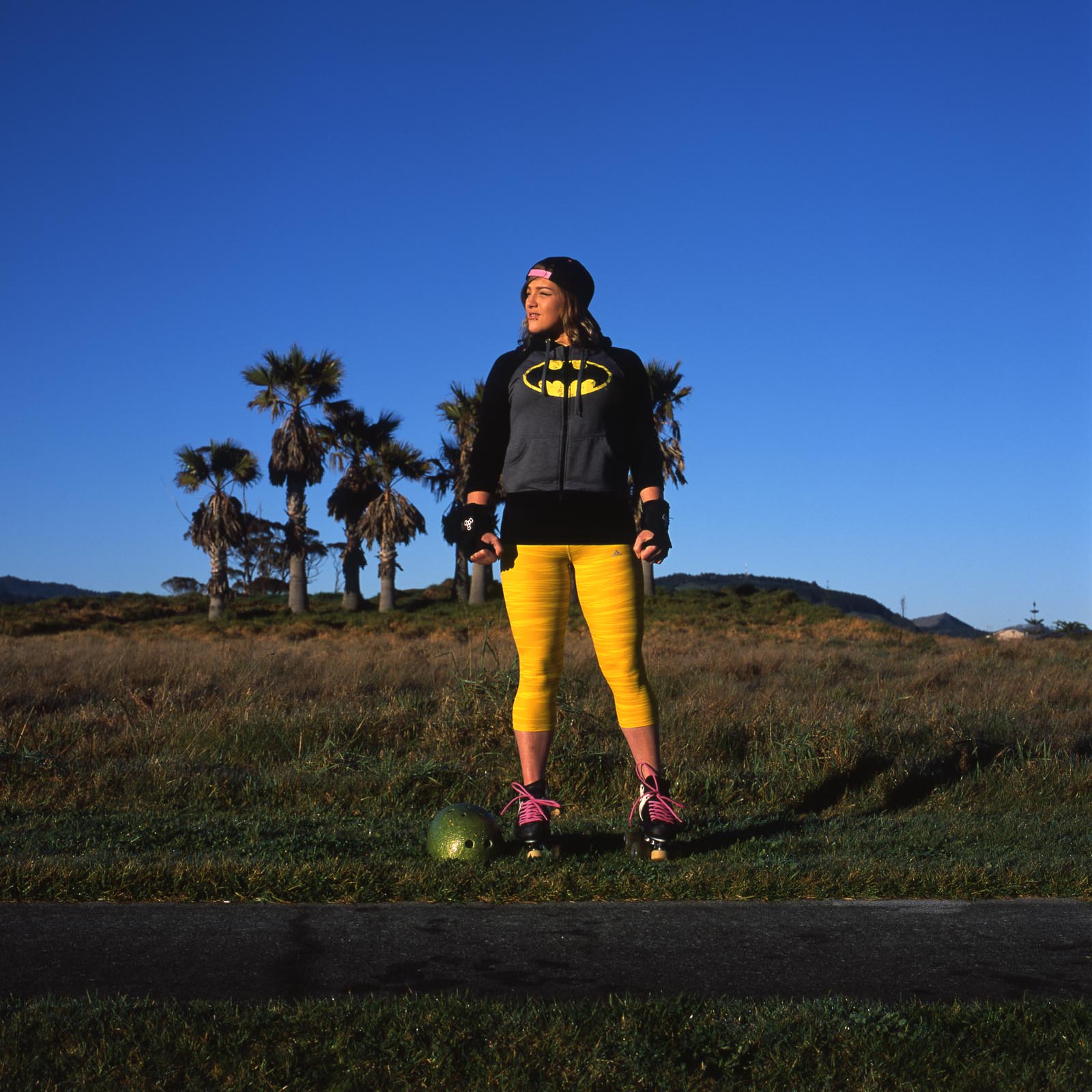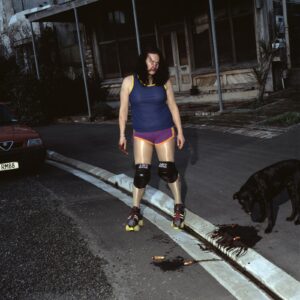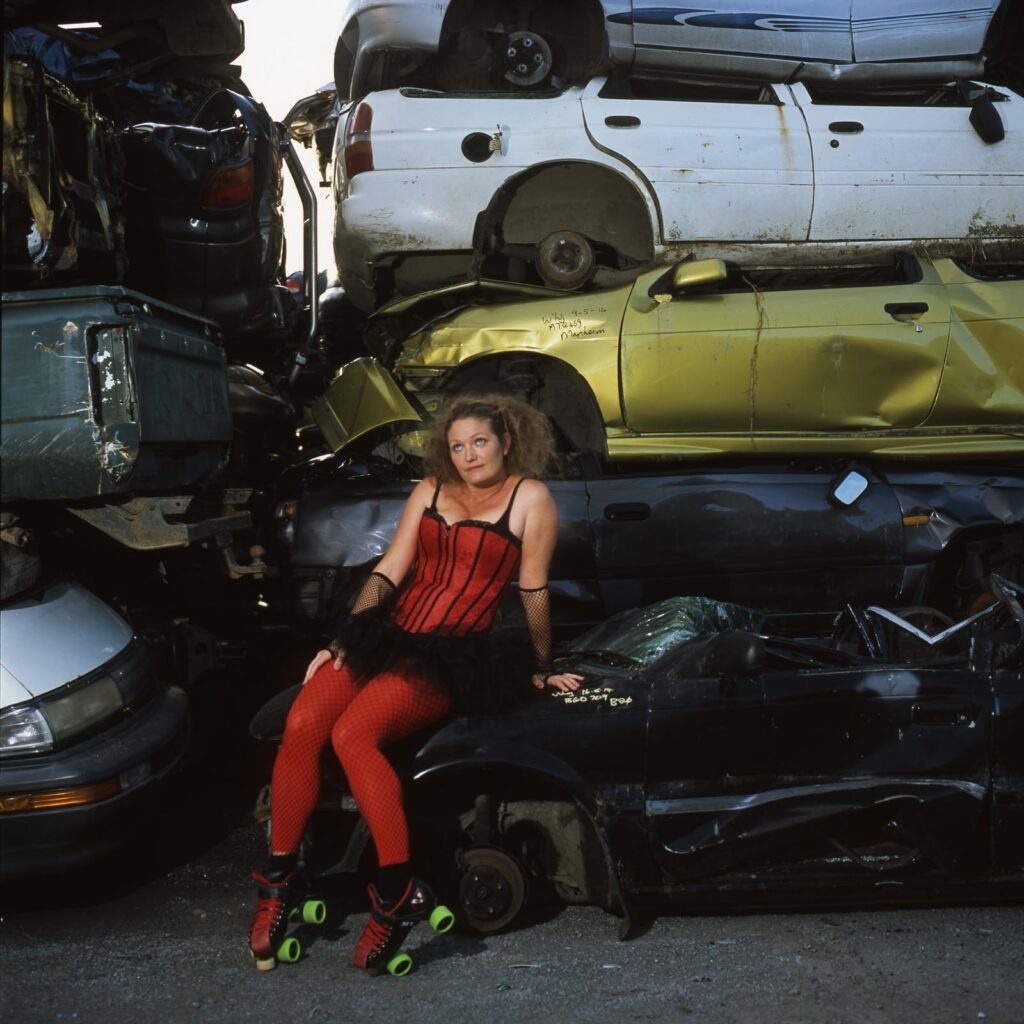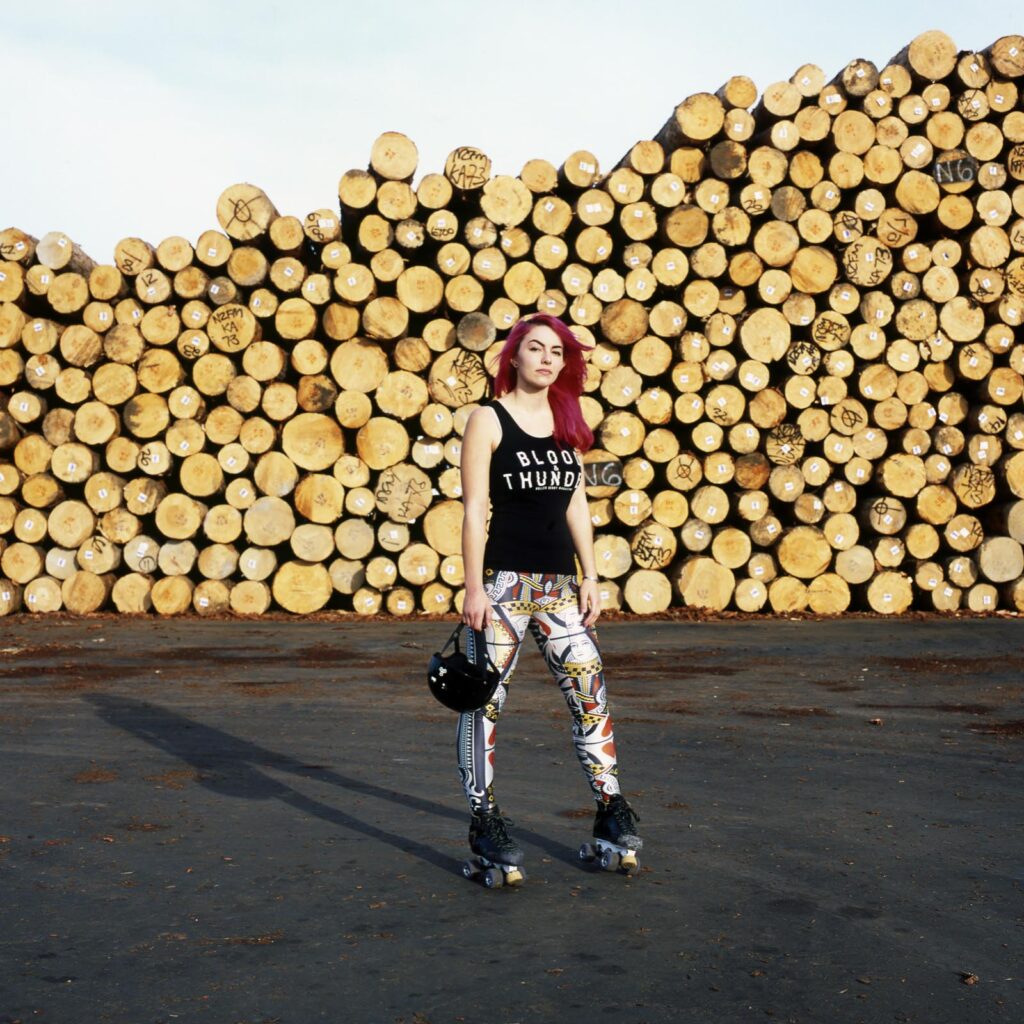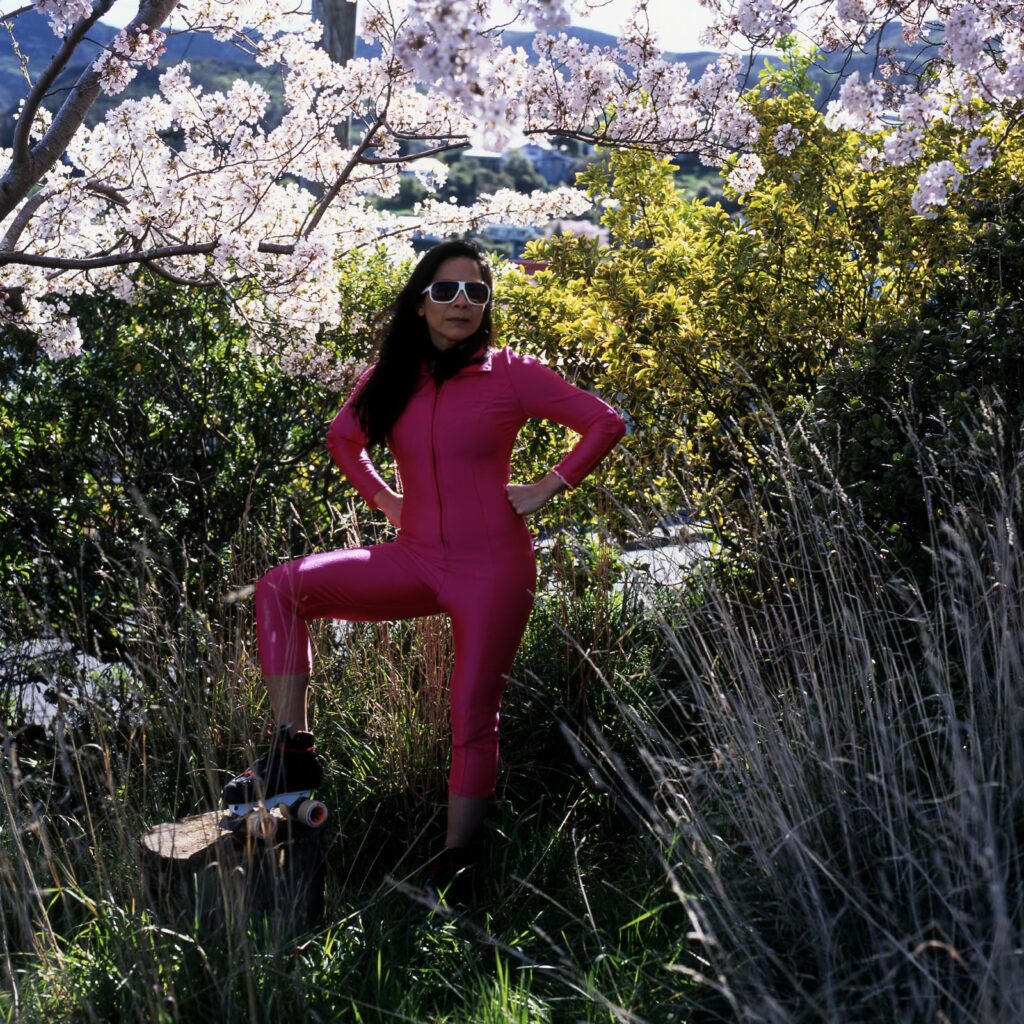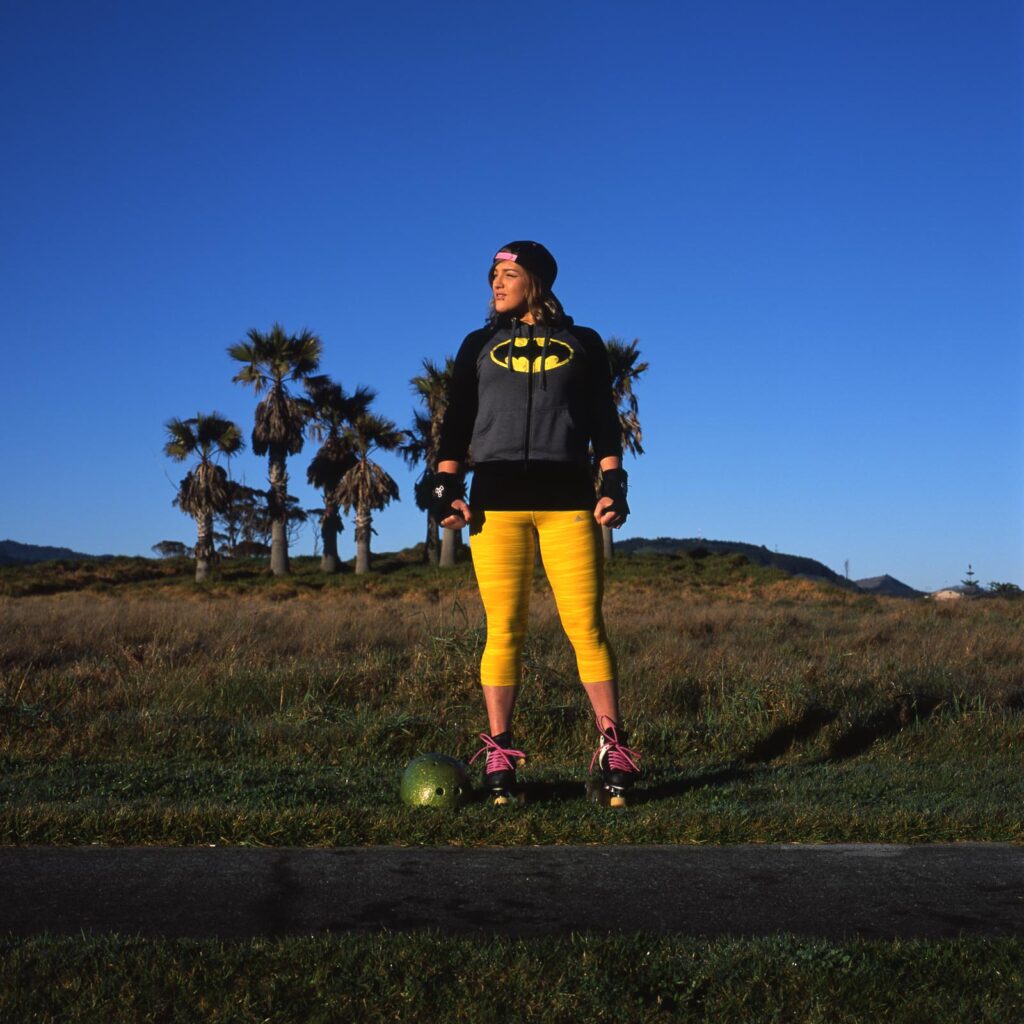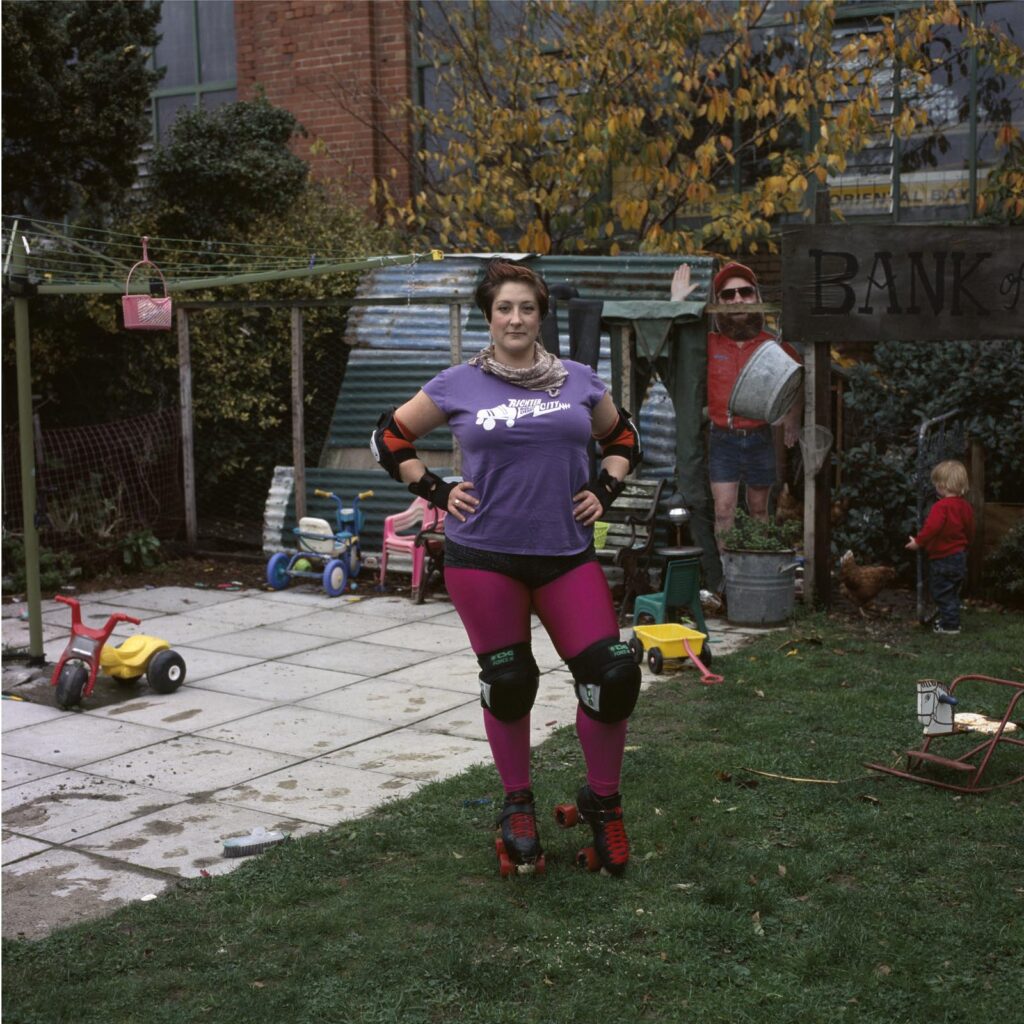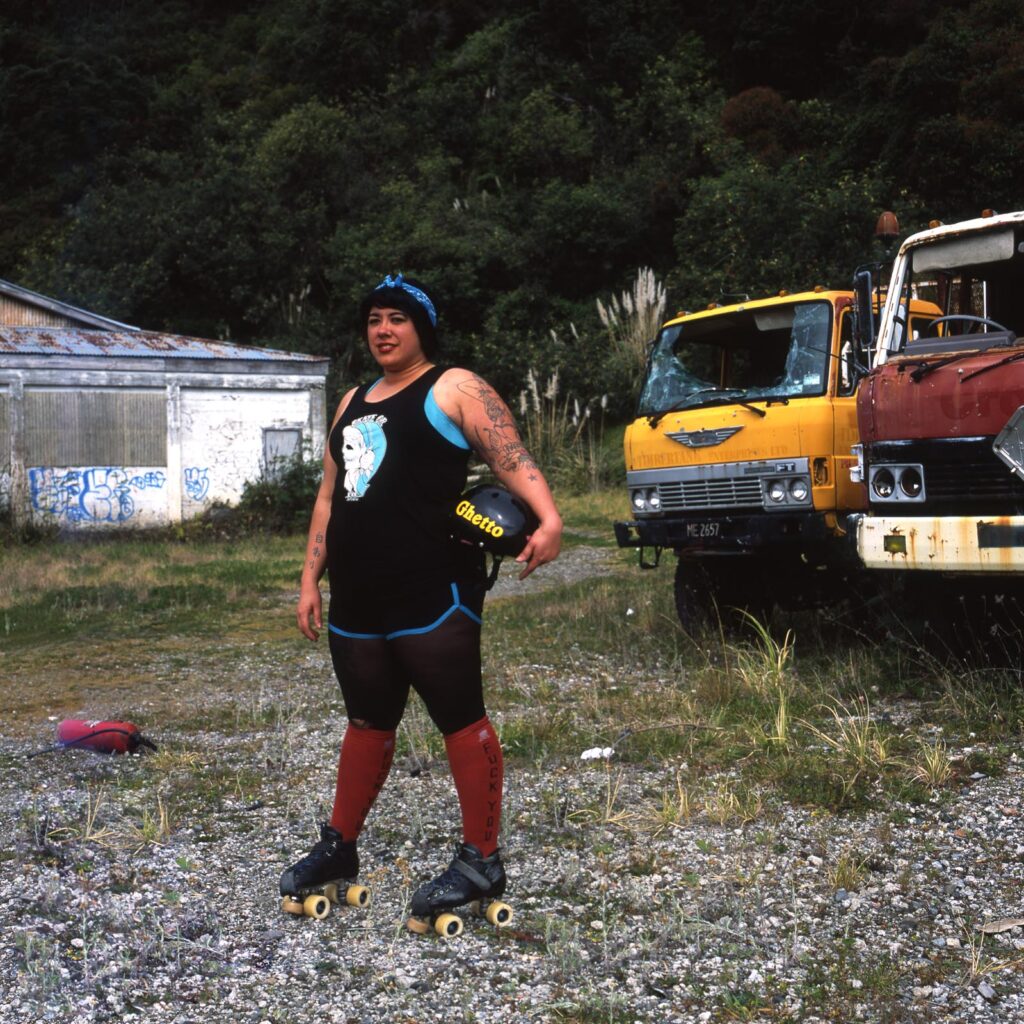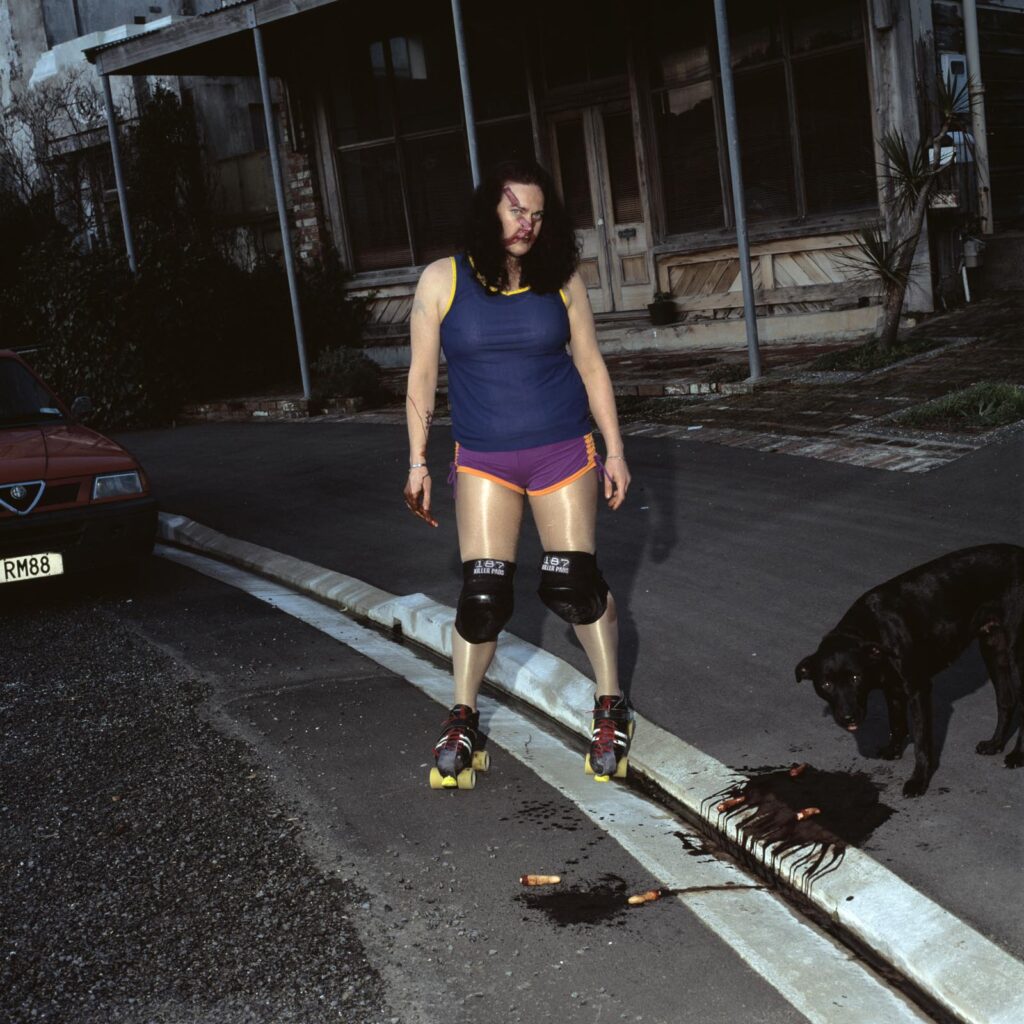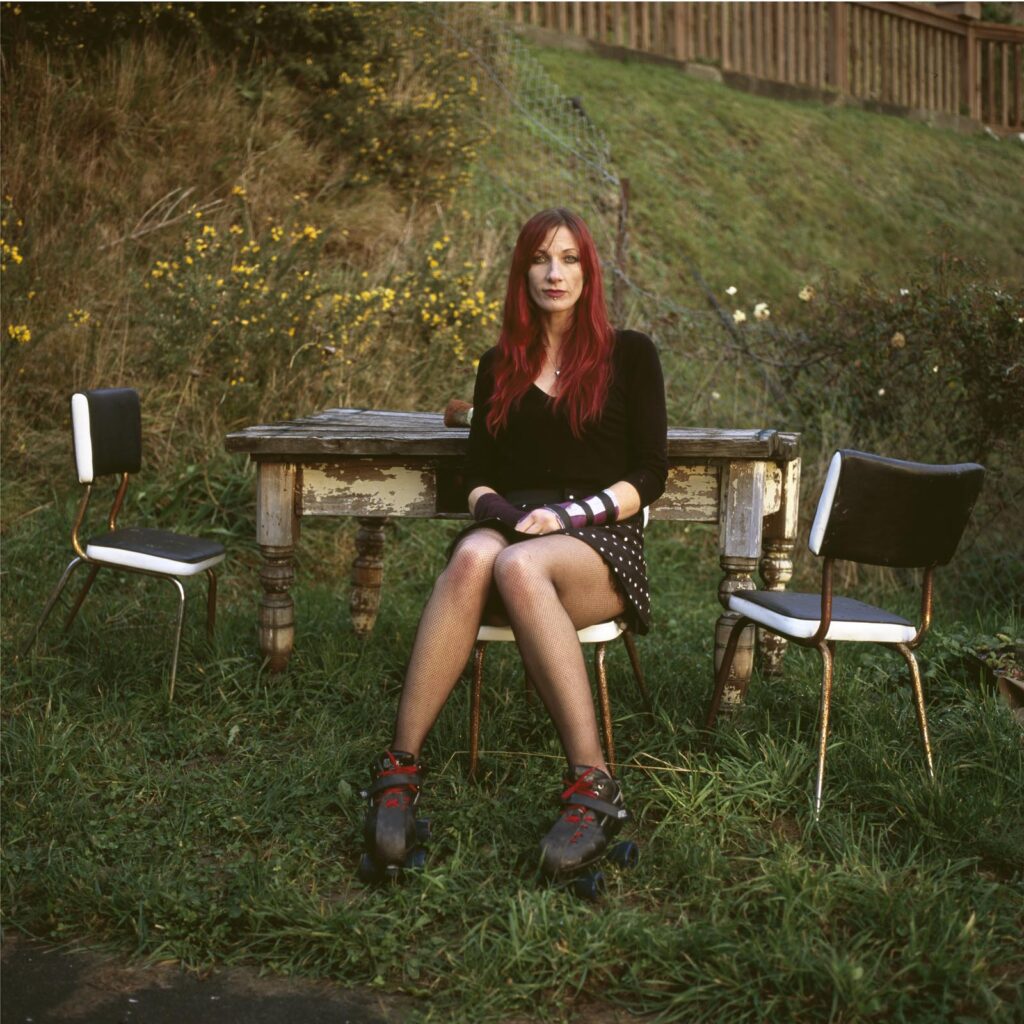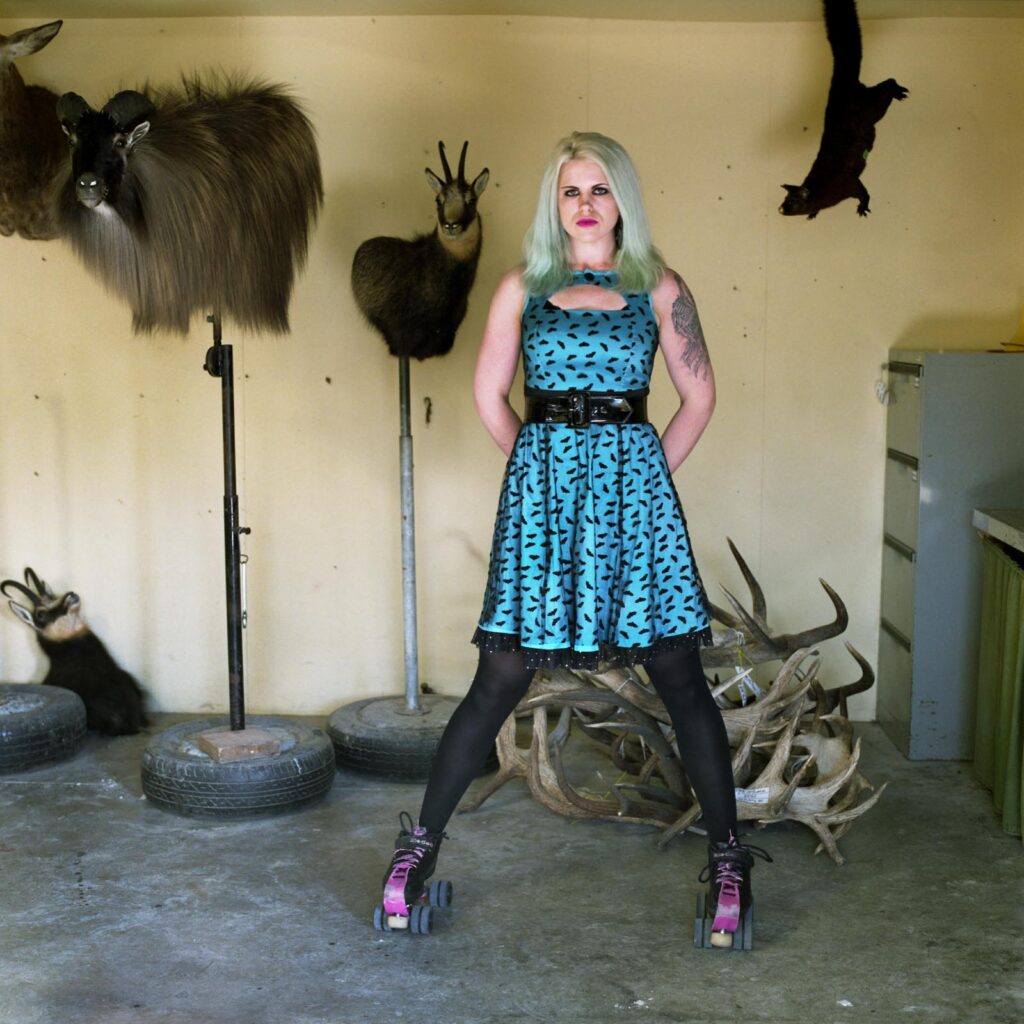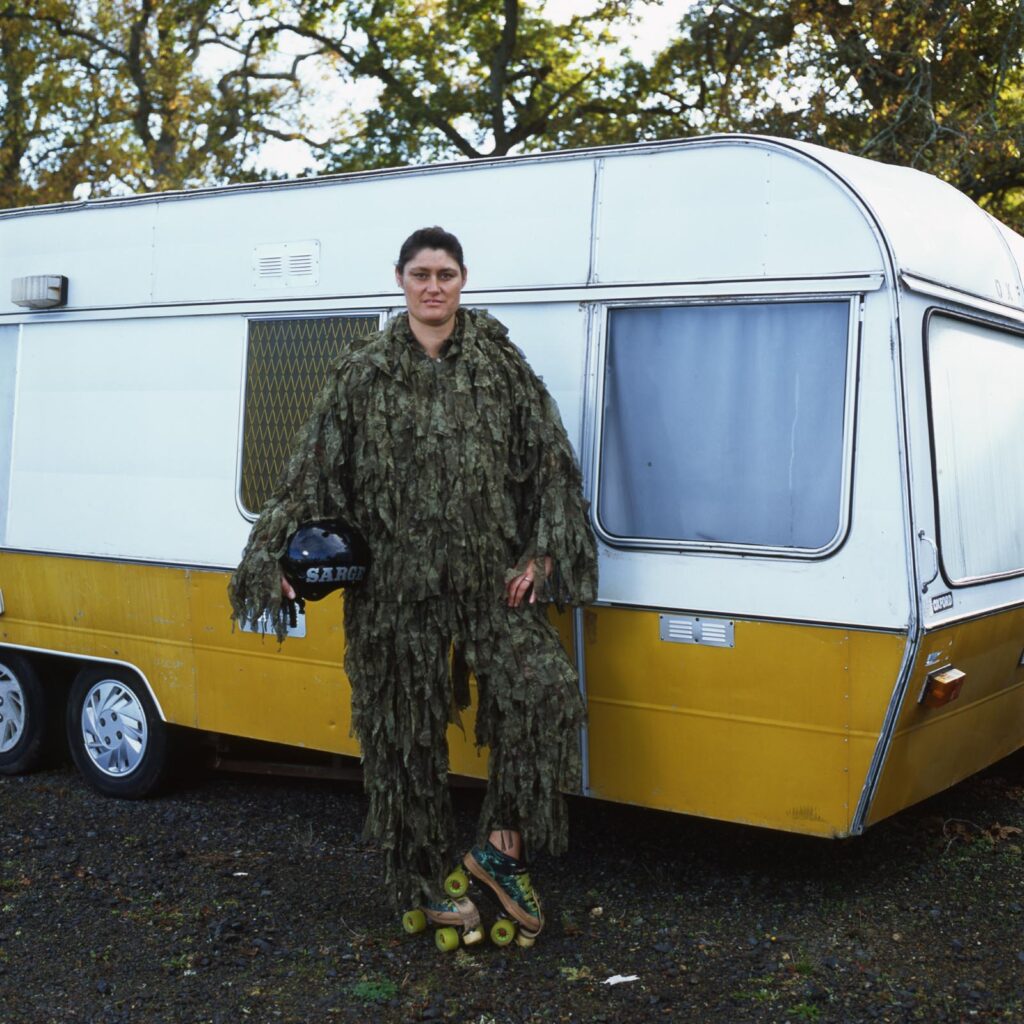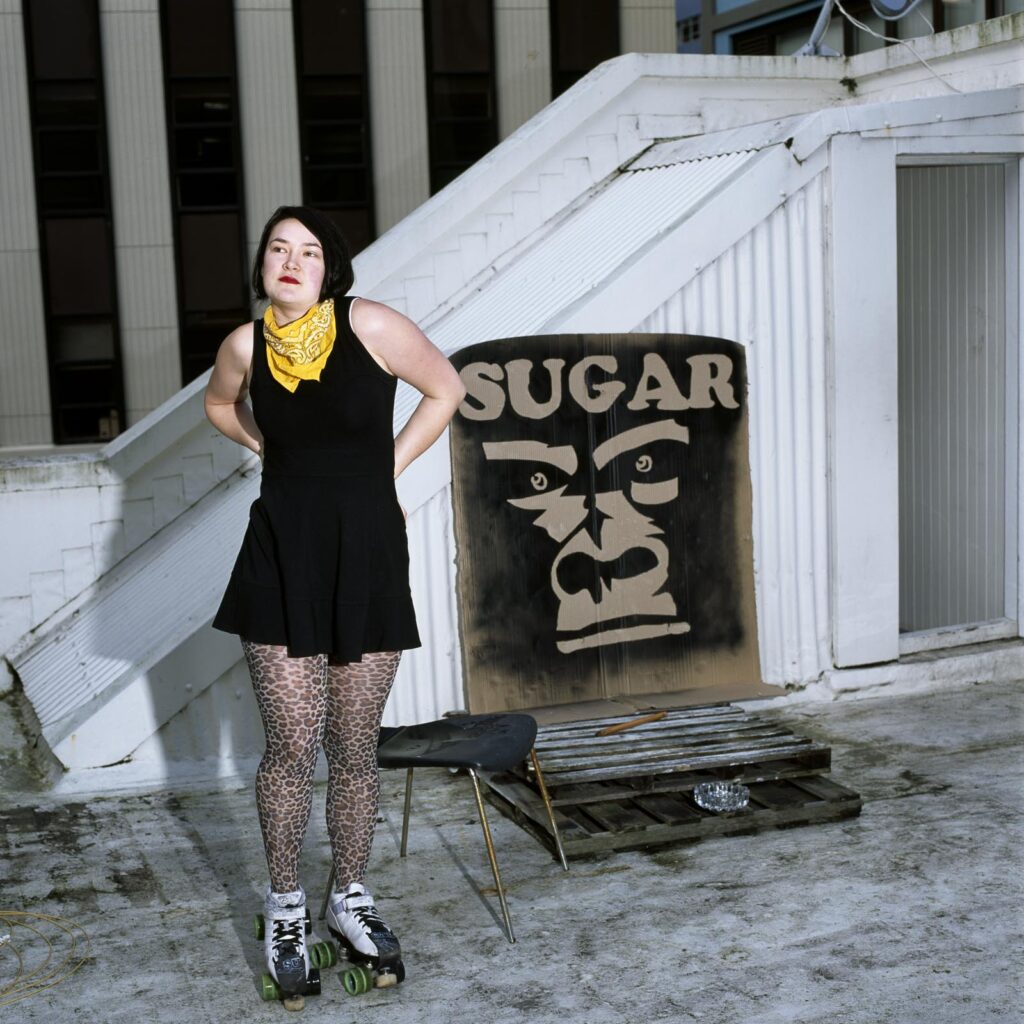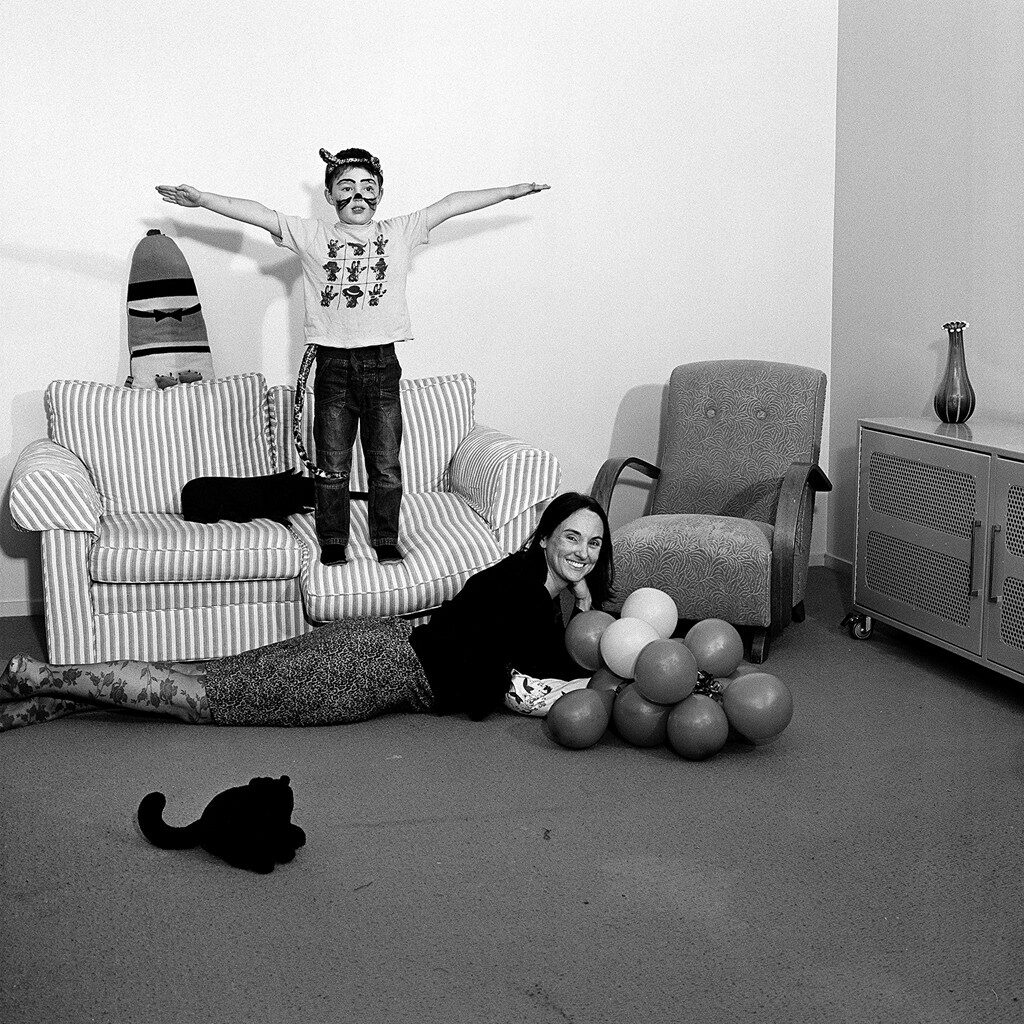Buy the Book
Introduction by Sarah Hudson
“To the knowledgeable and uninitiated alike, the idea of roller derby can excitingly conjure up the notion of unruly packs of women on roller skates, covered in make-up and bruises, cackling with the empowerment of camaraderie and their own physical prowess…
88 pages of glorious photography and the stories of women who skate.
The combination of visual culture and an intense full-contact contact sport with a cult underground following kept her coming back to roller derby bouts.
Kingston-based art photographer Philippa O’Brien is poised to publish an important book that chronicles the New Zealand roller derby scene.
New Zealand was the first country outside the USA to pick up the sport and since the first bout between leagues in 2007, roller derby has seen incredible growth here. Over 40 leagues now actively play the sport in New Zealand.
Skateface is the product of five years spent visiting leagues throughout the country and photographing skaters on a medium-format Hasselblad film camera. What started as a project for O’Brien’s Diploma in Photography, ended up as a conceptual series documenting a critical point in the evolution of roller derby.
When O’Brien happened upon the scene in 2011, roller derby was undergoing a transformation.
“I was initially attracted by a series of posters in Cuba Street advertising an upcoming bout. It was a playing card design with two captains of Richter City Roller Derby as queens. It was sassy and immediately grabbed me.”
“I loved the inclusiveness, the we-don’t-give-a-toss-what-you-think-of-how-we-look attitude and the way the audience brought their young children and elderly to it. It’s a place where women thrive.”
However as she watched, O’Brien was privy to the transition of roller derby from its theatrical roots to a more legitimate sport. “Between 2011- 2016 there was significant change. In the future that sport may look very different so the book is a bit of a time capsule.”
O’Brien’s photographs reflect the diversity of women who play this counter-culture sport. And while roller derby is typically represented as aggressive and combative, O’Brien captures the skaters in quiet, reflective moments.
As a result we get an introspective look behind the colourful uniforms, helmets and warpaint at what really makes this sport tick.
The photographs are supported by frank and largely unedited interviews with the skaters, exploring their motivations for playing this intensely physical sport.
“The interviewing process gave depth to the imagery and the sport and a portal into this community, revealing a deep human connection and experience.”
The words and images chronicle the rise of roller derby in New Zealand and speak important truths about what it means to play contact sport as a woman.
“To me this book is really special because it shows we are athletes, playing the fastest growing women’s sport in the world. It pays tribute to the people who established roller derby as a sport, both Aotearoa and throughout the world. It shows New Zealand’s huge contribution to the sport internationally.”
– Skanda Lass, veteran member of Richter City Roller Derby, Wellington
